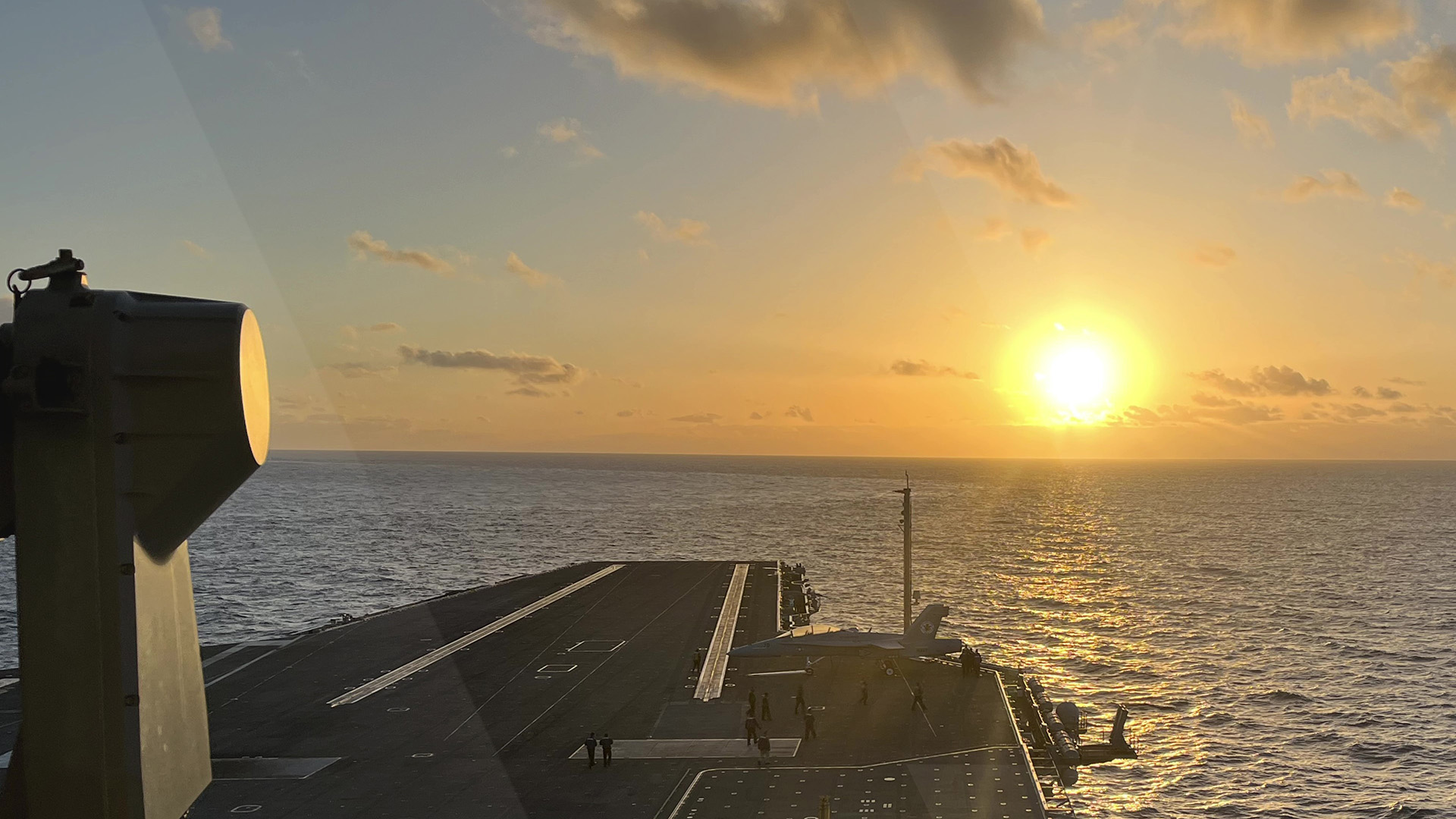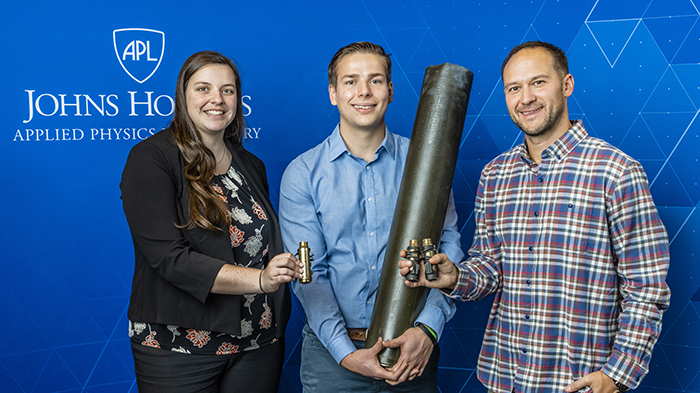News
At Sea, Johns Hopkins APL Engineer Gains Inspiration and Insights for Tech Development
Floating in the Pacific Ocean, Sherry Chen looked out over the 1,000-foot tarmac deck as two F/A-18 Hornet fighter jets revved for takeoff. The powerful rumble from the jets’ engines shook the entire platform as they shot past Chen at breakneck speeds, lifting into the clear blue sky and disappearing from sight only a moment later.
Chen, an early-career software engineer at the Johns Hopkins Applied Physics Laboratory (APL) in Laurel, Maryland, watched this “Top Gun”-like display from the USS Carl Vinson, a U.S. Navy aircraft carrier, during a six-day voyage aboard the vessel in mid-January.
This wasn’t a vacation. The trip was part of the U.S. Navy’s Scientists to Sea program, an opportunity for researchers to experience life on commissioned ships firsthand, and to observe how sailors use the technology and capabilities the researchers develop.
“I’d never been on a ship before this,” Chen said. “It immediately sparked my interest as a great opportunity to better understand the Navy, our sponsor organization.”
Chen, who started full-time at APL in August 2022 after completing an internship with the Laboratory last summer, learned about the program from her supervisor and Wayne Pavalko, who manages APL’s participation in the Navy program.
“These trips are really helpful for civilian scientists and technologists to become more familiar with ship life and operations, which is a huge benefit when developing solutions for the sponsor,” said Pavalko, who previously served as an Office of Naval Research global science advisor, liaising between the office and science and technology organizations in government, academia and industry. “We were really excited to have Sherry, as an early-career engineer, embark on this trip and benefit from direct engagement with the people who use the technology she works on.”
The USS Carl Vinson carries technology called the Cooperative Engagement Capability (CEC), which Chen works on for APL and the Navy. APL-developed CEC networks together geographically dispersed sensors to create a single integrated picture of the sky. It enables situational awareness for anti-air warfare capabilities on Navy ships and aircraft. While onboard, Chen was able to talk with service members who operate CEC.
“I’d never been able to interact with the people who actually use the things I make,” Chen said. “At APL, we can sit here behind the screen and think about what a user would potentially want out of these systems, but it’s different to get those answers from the perspective of someone who actually uses them almost every day.”
During the trip, the researchers had the opportunity to watch day and night F/A-18 takeoffs and landings from the flight deck, as well as helicopter ordnance transfers, which were the primary purpose of the voyage. The researchers also witnessed a replenishment at sea — a tanker ship supplying jet fuel to the Carl Vinson.
“I learned a lot about shipboard navigation and rules of the sea while the USS Carl Vinson was undergoing these operations,” Chen said. “The depth of the sailors’ knowledge was just incredible — we could talk for hours.”
The researchers also gained insight into the sailors’ lives aboard ship. They slept in berths, ate ship-cooked food (Chen rated it a 7 out of 10), navigated the ship (which someone has to do 24/7 — there’s no auto-steer), watched planes take off from the deck, viewed the media department where the ship’s TV show and magazine are produced, and even visited the movie room and library.
“The ship is like a small city,” Chen said. “There are around 5,000 people on board when it’s underway, and many of the activities they would do in port are provided to them on the ship.”
Chen returned with a significantly better understanding of U.S. Navy ships and the service members who live and work on them.
“Their lives are so different from ours,” Chen said. “I would really recommend that anyone who is interested apply to participate in this program. It’s a great opportunity to understand more about the people who use APL-developed technology.”

